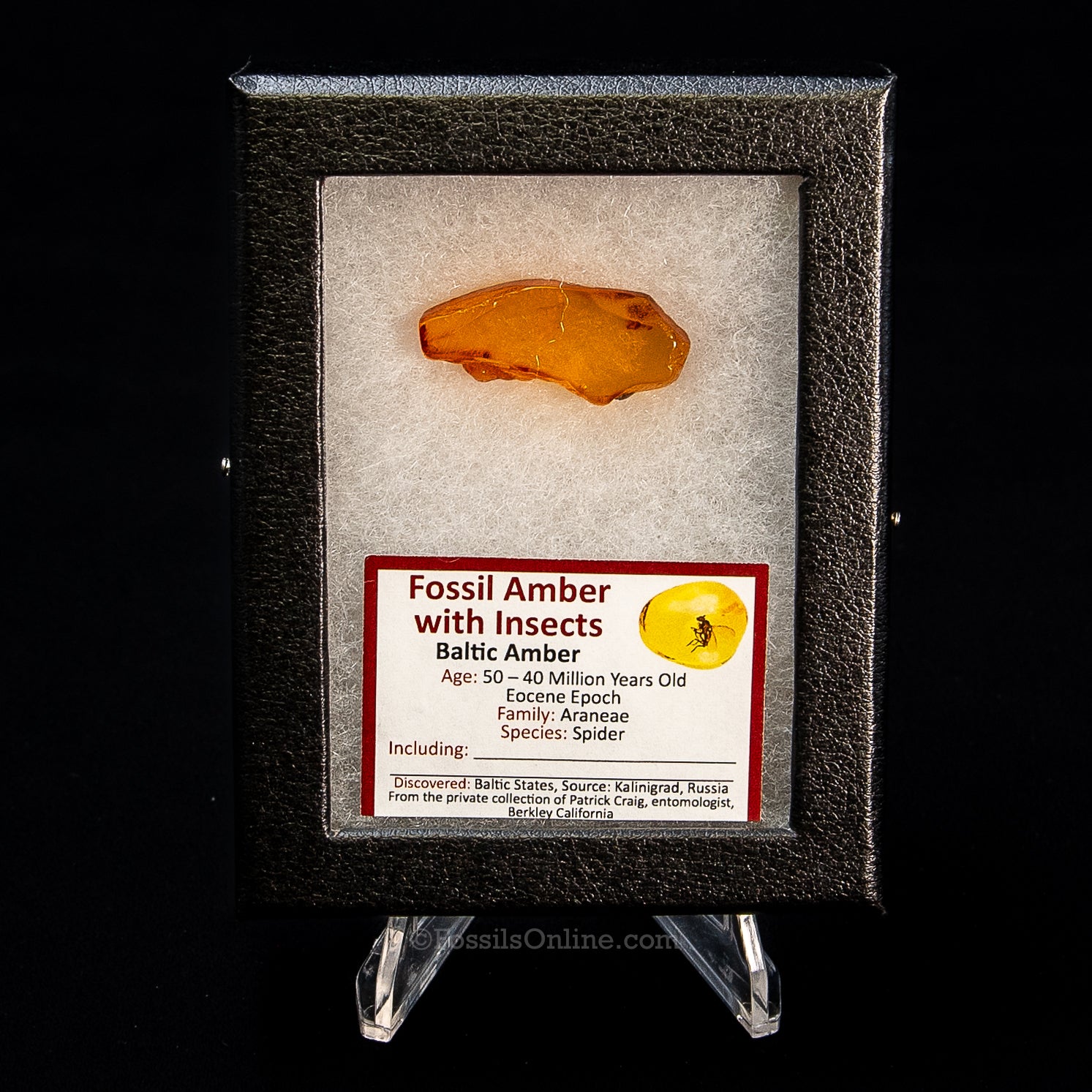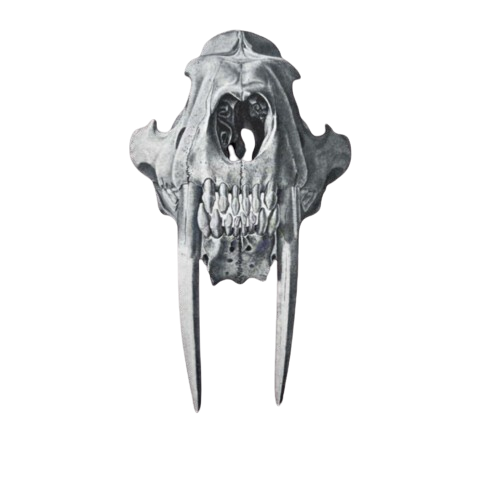

Dinosaur Age Amber with a Spider (Family: Araneae)
A well-preserved prehistoric spider from the order Araneae, frozen in golden tree resin for over 40 million years. Despite its tiny size, the fine details of its legs, body segments, and posture are beautifully captured—making this a rare and scientifically fascinating piece of natural history. Spiders have been spinning webs and stalking prey for hundreds of millions of years, and this individual offers a rare window into their ancient world. Its preservation in amber provides an extraordinary level of detail, offering a glimpse into the forests of the Eocene epoch.
This genuine Baltic amber is between 40–50 million years old, originating from the famed deposits of Kaliningrad, Russia. Encased within the golden resin are prehistoric insects, preserved in stunning detail. From an old collection of entomologist Patrick Craig of Berkeley, California. Each specimen has been professionally photographed and enlarged to reveal the delicate features of these ancient creatures.
The process begins when the trees secrete sticky resin—often as a natural defense against injury or insect infestation. While still fresh and viscous, the resin would occasionally trap small organisms such as insects, spiders, or plant material. Once stuck, these creatures were quickly entombed, preventing decay by sealing them off from air and microorganisms.
Over time, the resin hardened and was buried under layers of sediment. Through millions of years of pressure, heat, and chemical changes, it underwent a process called polymerization, gradually transforming into amber. Because the resin preserved the entrapped organisms in fine detail, Baltic amber often contains remarkably well-preserved prehistoric life, offering scientists an invaluable window into ancient ecosystems.
Displayed in a 4.5" x 3.25" case.
Size
1.37"wide
Choose options


